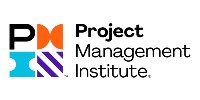Agile, Traditional, and Hybrid Approaches to Project Success: Is Hybrid a Poor Second Choice?

The last two decades have seen the rise of agile approaches to projects, coinciding with a reduction in the prevalence of traditional (waterfall) approaches. However, agile and traditional approaches should not be viewed as a dichotomy, as we found most organizations used a combination of agile and traditional practices. Hybrid project governance occurs when a project manager combines practices from more than one project approach. For example, using traditional practices (e.g., work breakdown structures or a risk register) and agile practices (e.g., stand-up meetings or sprints) in a single project would be an example of a hybrid approach. Our current survey showed that hybrid approaches are the new normal. We found that hybrid approaches deliver similar results to traditional or agile approaches on schedule, budget, and scope delivery, and the hybrid approach outperforms traditional approaches on client satisfaction. Hybrid approaches are a good way to optimize business value while minimizing project risk.

Method Summary
Researchers conducted a survey of experienced project managers who reported the results of 477 cross-industry projects. Projects were divided into three groups: primarily agile, primarily traditional, and hybrid. These three sets of projects were analyzed to see how they compared on these measures of success: schedule, budget, scope/quality, and stakeholder satisfaction. In addition to these factors, other variables shown to influence project success were also measured to test whether the project approach was influential, including goal clarity, stakeholder engagement, project complexity, team experience, attitude to change, and management support.
Key Findings
• Over 50 percent of projects were governed using a hybrid approach. The agile approach represented 15 percent and the traditional 33 percent.
• Hybrid projects delivered the same level of success on triple constraint goals (budget, schedule, and scope/quality) as traditional and agile approaches. There was no statistical difference among these three approaches on attainment of budget, schedule, and scope/quality targets.
• Agile and hybrid projects produced the same level of stakeholder success, and both approaches produced significantly higher levels of stakeholder success than traditional projects. Stakeholder success was measured as an average of the measures of sponsor, client, and project team satisfaction.
• Both agile and hybrid approaches significantly and positively impacted stakeholder success after controlling for other important variables such as goal clarity, team experience, stakeholder engagement, and project complexity.
Practical Implications
• If conventional measures of project success—budget, schedule, and scope/quality—are critical then any of the three approaches (traditional, agile, or hybrid) can deliver positive outcomes. Often, projects that are well understood and clearly defined fall into this category.
• However, if there is a need for team, stakeholder, and/or client engagement to steer the project iteratively toward a satisfactory conclusion, then using a hybrid or agile approach will produce more successful results than a traditional approach.
• Choosing a hybrid approach, which includes some agile practices, does not predict runaway budgets or schedules. Agile approaches are disciplined and can achieve project triangle targets to produce good budget and schedule outcomes.
• Taking time at the beginning of a project to discuss and decide on the overall approach and select practices from several methodologies to fit the context of the project and organization is a very worthwhile use of a project leader’s time.
• Sponsors and senior managers should seek to free projects from the strict application of specific methodologies and instead challenge project teams to use practices that add value and correspond to their environment.
Overall Takeaway
Our overarching conclusion from this study is that hybrid approaches are a viable option for today’s organizations, particularly when a pure agile approach might not be suitable.
Agile, traditional, or hybrid approaches can produce good results on the triple constraints of schedule, budget, and scope. To produce superior results on stakeholder success and value delivered requires a high level of communication among the team, sponsor, and client. This communication is better facilitated through an agile approach and practices.
These practices can be embedded in a purely agile or a hybrid project approach. Hybrid approaches are not a stage that organizations go through while moving from one project approach to another. A hybrid approach is not a poor second choice, but rather a natural evolution in the maturity of the project management discipline toward practices that achieve objectives and add value.
For further information on this and similar projects, please contact
Dr. Andrew Gemino at Gemino@sfu.ca
Dr. Blaize Horner Reich at Blaize.Reich@sfu.ca
Dr. Pedro M. Serrador at pedro@serrador.net
For the full journal article, go to: https://journals.sagepub.com/doi/full/10.1177/8756972818823304



























































































